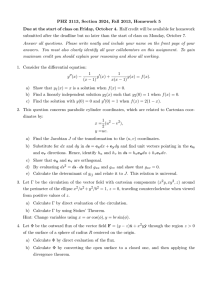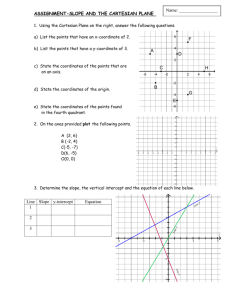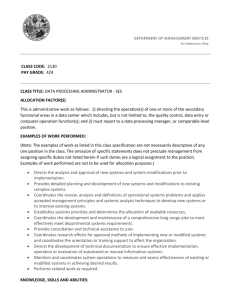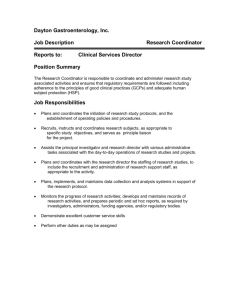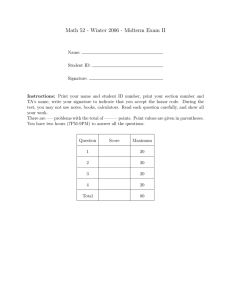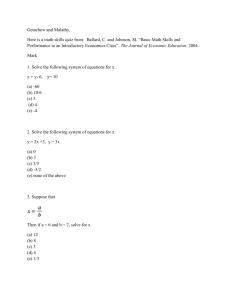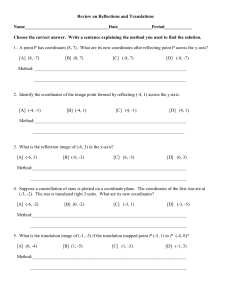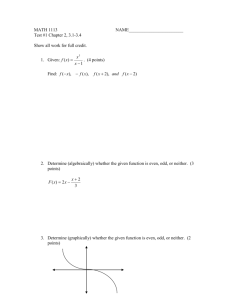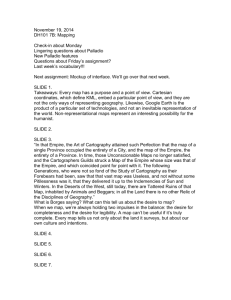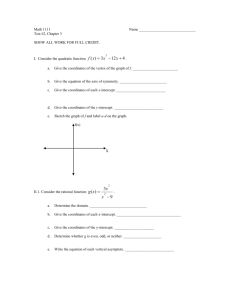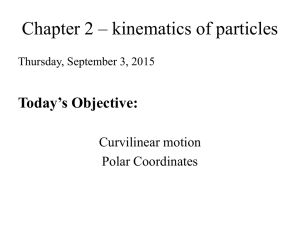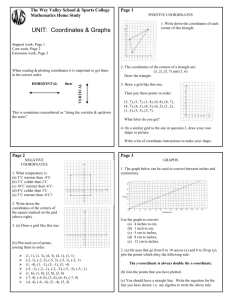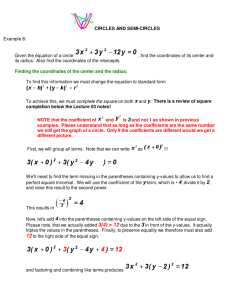Linear Algebra from Coordinates to Equations
advertisement
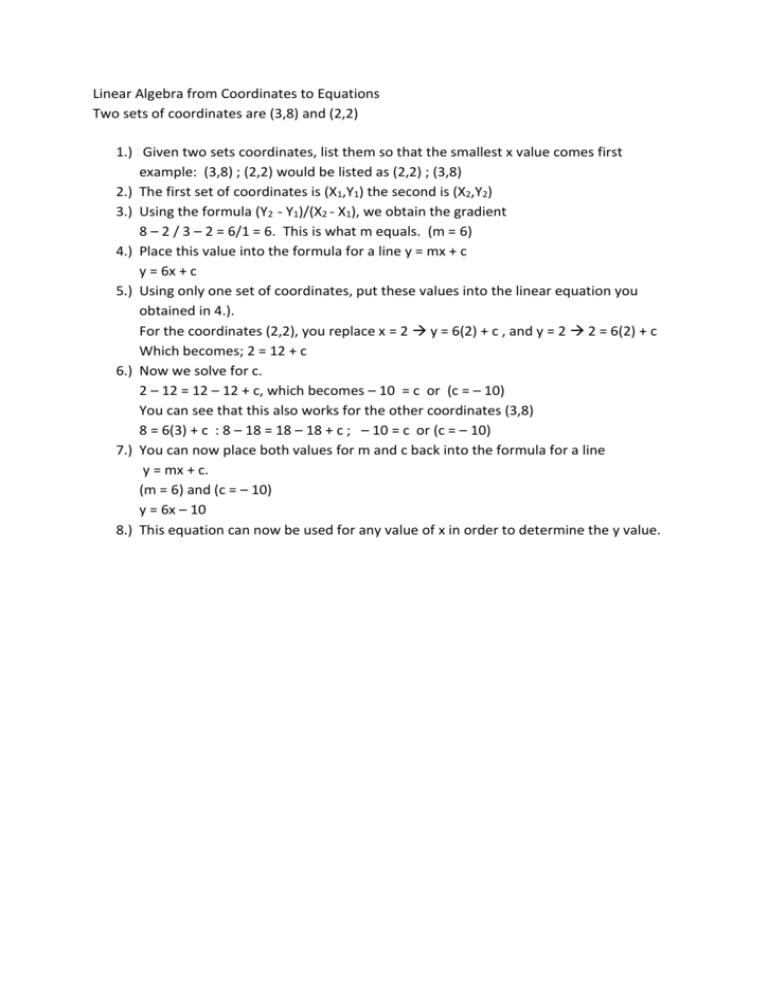
Linear Algebra from Coordinates to Equations Two sets of coordinates are (3,8) and (2,2) 1.) Given two sets coordinates, list them so that the smallest x value comes first example: (3,8) ; (2,2) would be listed as (2,2) ; (3,8) 2.) The first set of coordinates is (X1,Y1) the second is (X2,Y2) 3.) Using the formula (Y2 - Y1)/(X2 - X1), we obtain the gradient 8 – 2 / 3 – 2 = 6/1 = 6. This is what m equals. (m = 6) 4.) Place this value into the formula for a line y = mx + c y = 6x + c 5.) Using only one set of coordinates, put these values into the linear equation you obtained in 4.). For the coordinates (2,2), you replace x = 2 y = 6(2) + c , and y = 2 2 = 6(2) + c Which becomes; 2 = 12 + c 6.) Now we solve for c. 2 – 12 = 12 – 12 + c, which becomes – 10 = c or (c = – 10) You can see that this also works for the other coordinates (3,8) 8 = 6(3) + c : 8 – 18 = 18 – 18 + c ; – 10 = c or (c = – 10) 7.) You can now place both values for m and c back into the formula for a line y = mx + c. (m = 6) and (c = – 10) y = 6x – 10 8.) This equation can now be used for any value of x in order to determine the y value.


